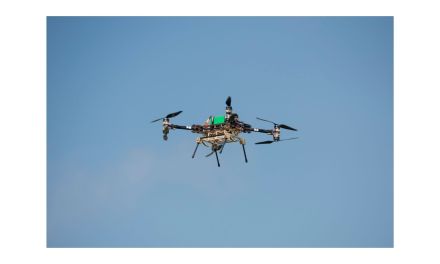Have you ever wondered how much electricity the gadgets and appliances in your home actually use? From the refrigerator humming in the kitchen to the air conditioner working in the background, each device has its own unique energy footprint. A recent study delves into this very topic, capturing the energy profiles of everyday household appliances. By examining these profiles, the research provides a clearer picture of how electricity is consumed in our homes, paving the way for smarter energy use and potentially lower electricity bills.
A recent study led by Professor Edwin Garabitos Lara, Dr. Alexander Vallejo Díaz, and Dr. Carlos Pereyra Mariñez at the Instituto Especializado de Estudios Superiores Loyola in the Dominican Republic offers valuable insights by examining the electricity use of various household appliances in operation within an apartment. This research, published in the Data in Brief journal, highlights the energy use of several common appliances over a period of months.
The study used advanced equipment to monitor electricity use, measuring how much power appliances draw, along with their efficiency and quality of power usage. This comprehensive data reveals how different appliances behave in everyday conditions, providing a baseline for understanding energy consumption in typical Dominican households.
Professor Garabitos Lara highlighted the importance of their findings, stating, “This data not only helps us understand how different appliances use electricity but also supports the design of systems that use solar power for homes and emergency situations. It’s a crucial step towards using energy more efficiently in our homes.” The insights gained from detailed monitoring can help in creating technologies that are not only energy efficient but also cost-effective for homeowners.
An interesting discovery from the study is the varied patterns of electricity use between appliances such as refrigerators, air conditioners, and less frequently used items like irons and washing machines. This variation highlights opportunities for developing specific energy-saving strategies that could have a significant impact on reducing overall household energy use.
“Understanding when and how appliances consume electricity allows us to recommend better energy-saving technologies and habits that can help reduce unnecessary power use,” added Professor Garabitos Lara.
Moreover, the research serves as a model for similar studies elsewhere, which could expand our understanding of household energy consumption patterns around the world. The results not only provide a current snapshot of how appliances use energy but also suggest ways to improve how we monitor and analyze energy use.
In conclusion, this research not only fills a gap in our knowledge about how household appliances use energy but also serves as an essential resource for energy researchers, policy makers, and consumers aiming to boost energy efficiency and adopt sustainable practices in daily life. Professor Edwin Lara and his team have offered invaluable insights into the dynamics of domestic energy use, which could lead to more informed decisions about energy use in homes everywhere.
Journal Reference
Edwin Garabitos Lara, Alexander Vallejo Díaz, Carlos Pereyra Mariñez. “Electrical dataset of household appliances in operation in an apartment”, Data in Brief, 2023. DOI: https://doi.org/10.1016/j.dib.2023.109742
About the Authors

Dr. Edwin Garabitos Lara is a professor of physics and mathematics at the Autonomous University of Santo Domingo (UASD), Dominican Republic. He is also a research professor at the Specialized Institute of Higher Studies Loyola (IEESL), Dominican Republic. He is a electrical engineer with two M.Sc. degrees, one in mathematics from the Santo Domingo Institute of Technology (INTEC) in 2013 and the other in physics from the Autonomous University of Santo Domingo (UASD) in 2016, Dominican Republic. He has a doctoral degree in Energy Management for Sustainable Development, from the Santo Domingo Institute of Technology (INTEC) in 2023. His main research interest is in techno-economic studies of distributed renewable energy and electrical engineering, and in general, the application of physics and mathematics in the electrical engineering.

Dr. Alexander Vallejo Díaz is a Mechanical Engineer from the Instituto Tecnológico de Santo Domingo (2011), he also holds a master’s degree in Renewable Energy Technologies (2017) and a PhD in Energy Management for Sustainable Development (2023) from the same university. He has more than 13 years of experience in the main companies of the Dominican energy sector, in the areas of engineering, operations, sales and energy marketing, in the companies AES, Wärtsilä, CDEEE and EGE Haina, respectively. Concomitantly, he has taught for 15 years in various Higher Education Institutions, such as IEESL and INTEC. He has taught computer-aided design, mechanical drawing, machine element design and economic engineering. As a researcher, since 2021, he has published multiple scientific articles and has disseminated the results in national and international congresses, such as Denmark, Spain, Mexico, Ecuador, and Dominican Republic. In which he has given lectures on urban wind energy, and other topics related to energy management to curb climate change in accordance with the Sustainable Development Goals. He is currently leading three research projects funded by the State of the Dominican Republic.

Dr. Carlos Napoleón Pereyra Mariñez has a PhD in Energy Management for Sustainable Development, from the Technological Institute of Santo Domingo (INTEC), Industrial Engineer and, MSc in Finance. He has more than 10 years of experience in the telecommunications sector and 12 years as Director of the Faculty of Engineering of the Specialized Institute of Higher Studies Loyola (IEESL) in the Dominican Republic. He is a member of the National Research Careers of the Dominican Republic (CNI 693).















































